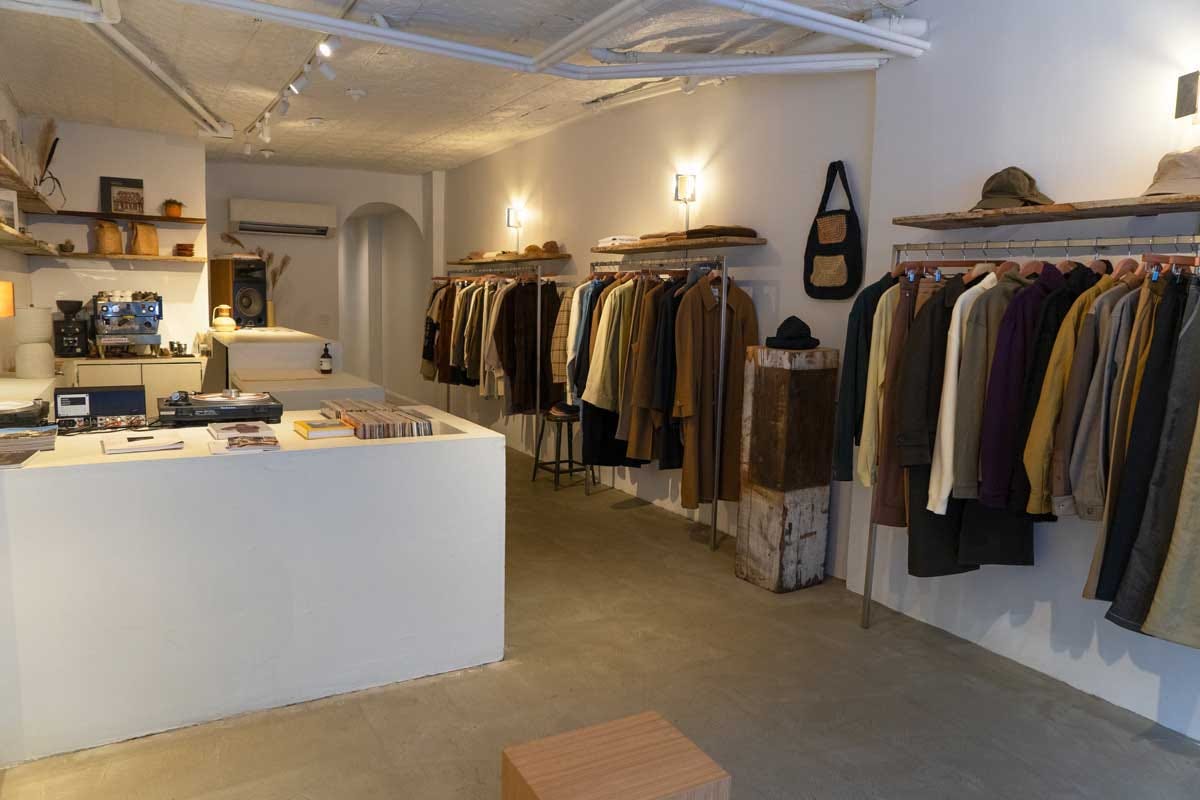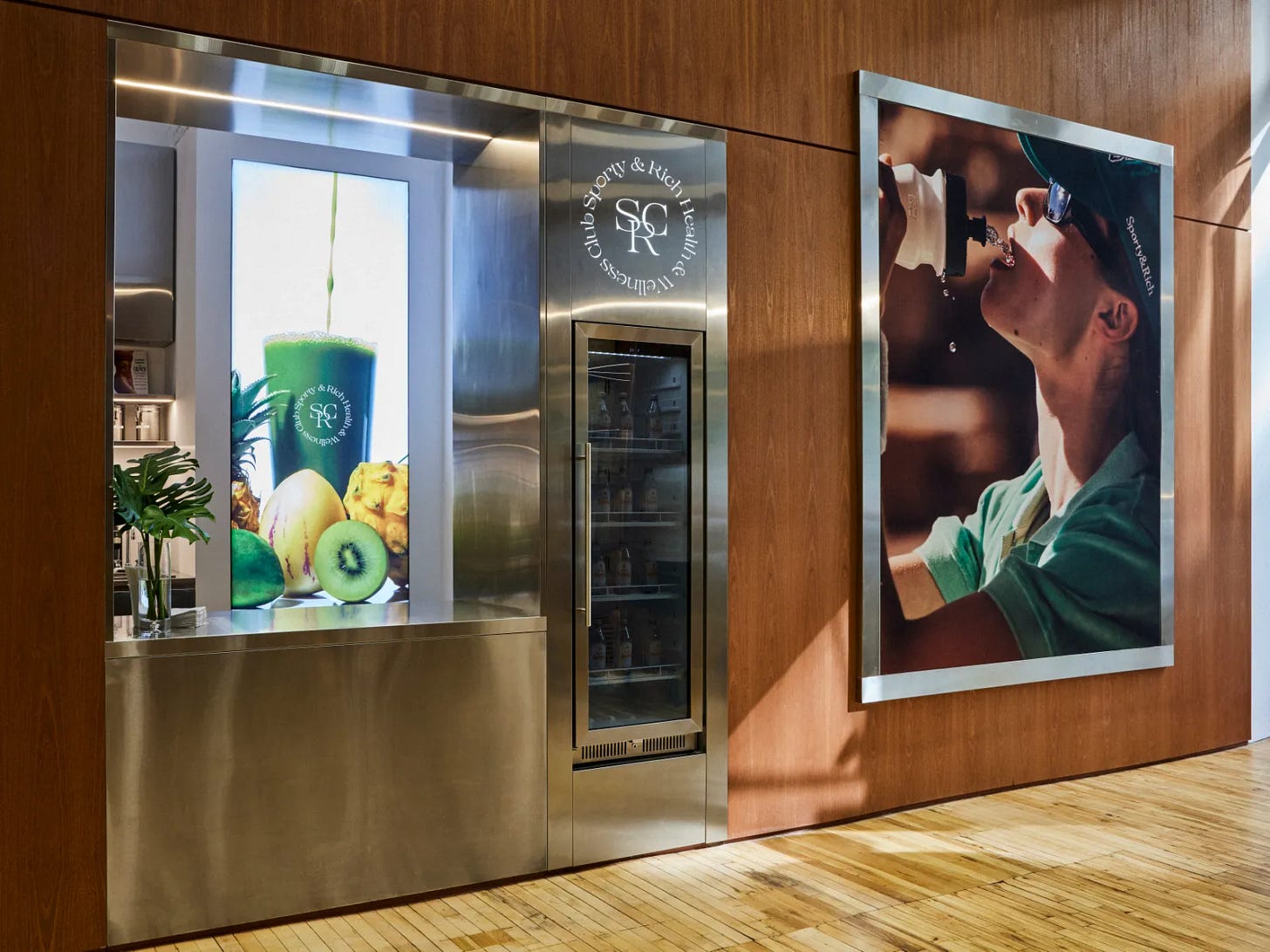Why Does Every Streetwear Store Sell Coffee Now? ☕️
Has this and other brand activation tropes run its course? Or is something deeper going on?
At any given moment in New York City, thousands of people are hitting the streets, heading to their favorite stores… and drinking coffee.
Over the last few years, it seems like every single new or existing brand has forced their sales associates to take a barista 101 course and added third-wave espresso beans onto their line sheets. Its not just flagship stores, but coffee has become a fixture of limited-time brand activations too.
Whether you are stopping by Colbo to grab a pair of muted brown trousers, or Aime Leon Dore to get loafers, it seems like every single store is selling coffee.
and fashion veterans like Luka Sabbat are taking notice—
Just yesterday afternoon, I stopped by the Nike Volt pop-up in SoHo to pick up a new pair of running shoes being sold exclusively there, to find a line out the door and workers yelling to patrons on the street they were giving out free coffee.
I have things to do… so I had to leave.
So what’s going on with this trend? Is it done to death? What can brands do next?
Origins
The origins of coffee and food being sold in stores is not really a novel concept. Legacy department stores like Nordstrom, Selfridges, and Bloomingdale’s have been incorporating cafes and later full-stop restaurants into their stores for decades.
If they can keep you in the store for as long as possible by providing some of the base essentials of Maslow’s hierarchy (food, water, oxygen) they can persuade you to spend more time browsing garments and actually purchase something.
It provided a novel way to turn department stores in destinations. Consumers are not always in need of a new pair of pants, but most of us eat everyday. So if the food and beverage program is good enough, these legacy stores could change consumer mindsets to consider just going to the Nordstrom Grille or L’Avenue at Saks for a meal, and having to walk past the newest Gucci collection on their way to eat a caesar salad wrap.
While this trend diminished as we’ve seen the collapse of the department store model, its taking a new shape in our favorite stores today.
The Espresso Era
In the modern era of fashion retail, building a full-on restaurant in a shrinking retail space is not an effective strategy. But, adding in an espresso bar is pretty easy. In the late 2010s, Carhartt WIP partnered with Allpress Espresso to create an espresso bar in their London location, and since then Allpress has expanded partnerships with other major retailers like Patagonia.
A staggering 66% of Americans drink a cup of coffee every single day, making it arguably one of the biggest common denominators between all consumer groups. Two thirds of us could probably use a cup of coffee at any given point.
So for brands looking to increase foot traffic to their retail locations, adding an espresso bar is an easy, mostly low cost proposition, and post-pandemic, when online retail is exploding in popularity. Fashion e-commerce is expected to become a $1T industry in 2025, and consumers are expected to spend $204.9 billion on fashion items online.
Coffee as Brand
Seeing the writing on the wall, many of our favorite fashion brands have quickly pivoted to add coffee bars to their physical storefronts, and the savviest have turned them into branded experience.
Take for example, Cafe Leon Dore, situated right next to Aime Leon Dore, consistently sees lines out the door on Mulberry St. And the brand has capitalized on its popularity by creating full lines of merchandise solely based on their coffee brand.
This creates a new opportunity to align consumers with their brand by selling a cheap, minimum entry point, branded offering. If someone can’t afford a $500 pair of ALD linen trousers, but still want to associate themselves with the brand they can most likely spring for a $5.75 Freddo Espresso.
This model is nothing new to luxury retailers, which derive the majority of their sales from selling small leather goods and accessories. Brands need to be offering a product that introduces people their brand world, enveloping them and positioning them to make a larger purchase later on.
Creating Community
Additionally, the increased popularity of third-wave coffee amongst Gen Z creates a ripe opportunity to spread its halo effect and build a sense of community in brands.
Earlier this year, Vogue Business wrote about how the Gen Z broke the traditional marketing funnel, and need to pivot to creating community in their brands if they want to compete.
Brands like Madhappy, Colbo, and Emily Oberg’s Sporty & Rich have effectively leveraged the community model, holding events at stores, bringing in brand-aligned speakers, and creating opportunities for fans of the brand to interact with one another, further deepening their connection.
And the through line that connects the vast majority of these in-person events: the brands are selling coffee, natural wine, or smoothies.
The Nike Volt pop-up is a perfect example of this. Organized in collaboration with Something Special Studios, the 4 day experience is bringing together NYC’s running community for daily runs, and offering free cups of coffee along the way.
Our social fragment is more disconnected than ever, and we are all searching to build communities, interact with likeminded individuals, and get out of the f*cking house.
Smart brands are leveraging this and creating experiences people actually want to attend, and hoping to increase their brand loyalty.
While the post-purchase serotonin derived from purchasing a product quickly fades, a new connection or thought-provoking conversation lasts a lot longer, and if that memory can be associated with a brand, then consumers will be persuaded to keep coming back.
Even writers on Substack are leveraging this model. Feed Me writer, Emily Sundberg, is hosting a party this month to bring together her readers, and building a sense of community. Genius move. Brands and creators who want to make a meaningful connection need to bring their digital audiences in-person, and hosting in-person events, and adding free coffee, wine, etc. as a cherry on top.
What’s Next?
While the trend of every store selling coffee is getting a bit played out, I can’t blame these brands for doing it. In response to Luka Sabbat’s tweet, Trevor Gorgi, posted a video on how he opened his store Fugazi in the LES, with Sabbat’s tweet as the thumbnail—
But I am curious as to what is going to come next? The next store to offer a unique in-person experience has a real opportunity to drive buzz and get major points for originality.
I have some ideas but I’m not giving them out for free… if you’re a founder send me an email! jake@jb.studio
Thanks for reading today’s article :) I want to know your thoughts? Are you tired of this trend? Have you purchased coffee from a streetwear store? What do you think about brands building community? Let’s discuss in the comments.
Lastly, I want to give a shout out to APC for having me at their Mercer St. store for a discussion with Katie Holmes and Judith Touitou, where they promoted their new collaborative womenswear collection. It was a really nice talk.
Jake Bell is a content marketing, creative strategist, and designer based in NYC. He specializes in brand building, content creation, branding, art direction, creative strategy, and making things cool.
Want to chat? Email me: jake@jb.studio














the whole clothing brand doing lifestyle started in japan decades ago. at least in the form of cafes to lifestyle annex shops
It’s like you read my mind! The coffee renaissance has been in my head for quite some time now, especially as brands in the beauty space have rampantly started to leverage coffee shop community building too (saie, summer fridays, etc)